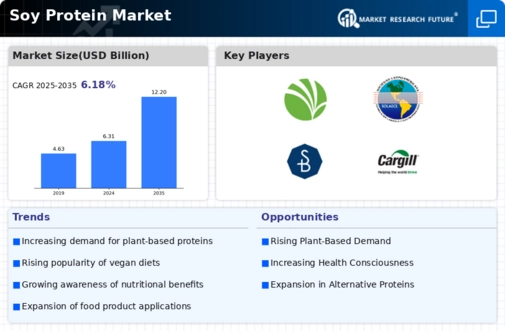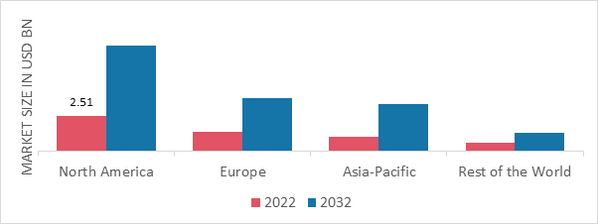Market Analysis
In-depth Analysis of Soy Protein Market Industry Landscape
Market share positioning strategies are pivotal in the Soy Protein Market, where companies compete to capture the attention of health-conscious consumers seeking plant-based protein alternatives. One central strategy employed by companies is product diversification. This involves offering a wide range of soy protein products tailored to various consumer preferences and applications. Whether it's soy protein isolates for athletes and fitness enthusiasts, soy protein concentrates for meat analogues, or soy protein powders for use in smoothies and baked goods, diversification helps companies cater to different segments of the market and expand their reach.
Quality assurance is also crucial in market share positioning. Given the increasing emphasis on clean-label products and sustainability, companies must ensure that their soy protein offerings meet stringent quality standards. By sourcing non-GMO soybeans, implementing sustainable farming practices, and prioritizing transparency in their supply chain, companies build trust and credibility among consumers, ultimately leading to a larger market share over time.
Pricing strategies play a significant role in market share positioning in the Soy Protein Market. Some companies may opt to compete on price by offering more affordable soy protein options, targeting price-sensitive consumers. Others may position themselves as premium brands, commanding higher prices based on factors like organic certification, purity, or additional functional benefits such as added vitamins and minerals. By carefully balancing pricing with perceived value, companies can capture market share while maintaining profitability.
Marketing and branding efforts are essential for shaping consumer perceptions and driving demand in the Soy Protein Market. Companies need to invest in strategic marketing campaigns that highlight the health benefits, versatility, and sustainability of soy protein products. Whether it's through educational content about the nutritional value of soy protein, eye-catching packaging designs that stand out on store shelves, or partnerships with fitness influencers and nutritionists, companies must find innovative ways to connect with consumers and differentiate their brands from competitors.
Distribution channels also play a critical role in market share positioning. Companies must ensure that their soy protein products are readily available to consumers wherever they shop. This requires establishing strong partnerships with retailers, distributors, and e-commerce platforms to maximize distribution reach. Companies may also explore opportunities for international expansion to tap into new markets and diversify their customer base.
Innovation is key to staying competitive in the Soy Protein Market. Companies that invest in research and development to create new soy protein products or improve existing ones can gain a significant advantage. Whether it's developing soy protein-based meat alternatives that mimic the taste and texture of traditional meat, introducing flavored soy protein powders for added convenience and variety, or exploring novel extraction methods to improve protein yield and purity, innovation allows companies to meet evolving consumer demands and stay ahead of the curve.
Strategic partnerships and collaborations can also be effective market share positioning strategies in the Soy Protein Market. By partnering with other companies, either within the food and beverage industry or across complementary sectors, companies can leverage each other's strengths and resources to drive mutual growth. Whether it's through joint product development ventures, co-branding opportunities, or strategic alliances for distribution and expansion, collaboration enables companies to expand their reach and capture a larger share of the market.








Leave a Comment